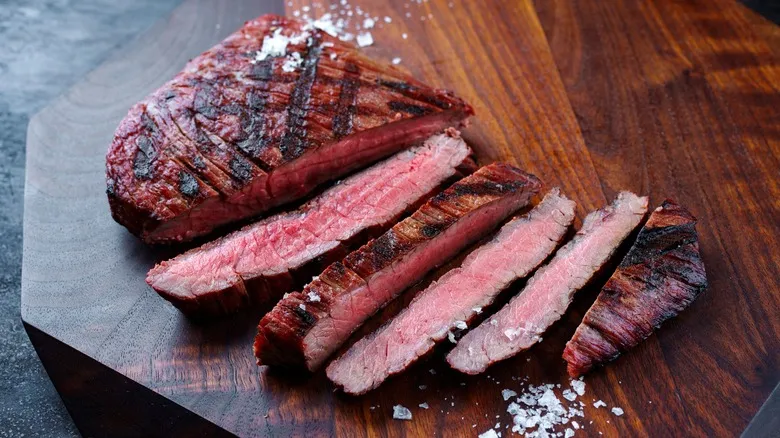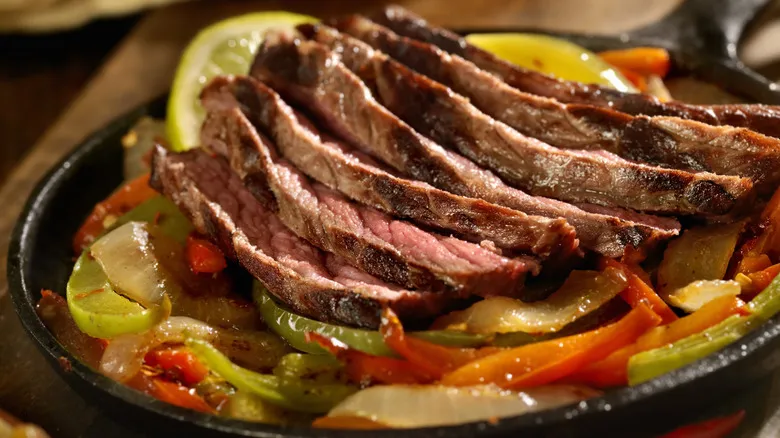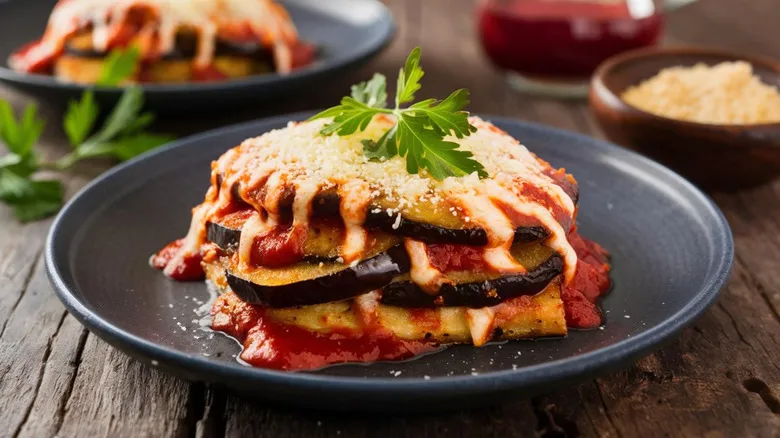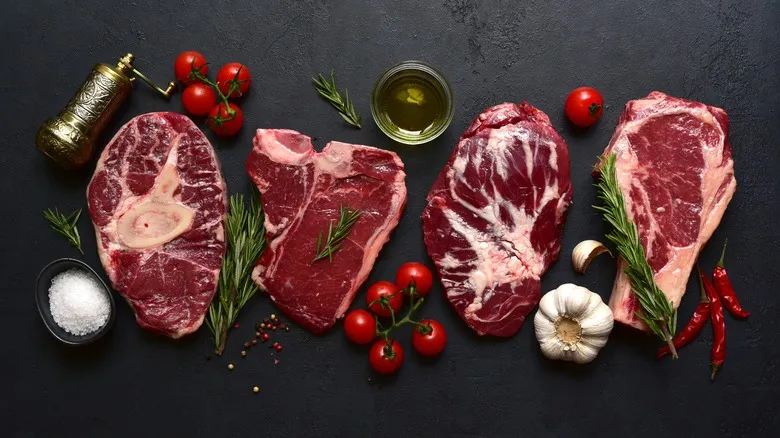Flat iron steak is extra tender

Flat iron steak is sourced from the shoulder of the cow, commonly referred to as the chuck. This cut is notably tender due to the abundant marbling present, which is a characteristic not typically found in other shoulder cuts. The marbling consists of fine white streaks of fat that melt during cooking, resulting in a rich and juicy texture. Flat iron steak is often noted for its earthy, gamey flavor. For novice cooks, this cut is ideal since it requires no additional steps for tenderization.
To enhance the flavors of flat iron steak, simply season it with salt and pepper before cooking. It performs best with direct heat, making grilling or pan-searing the preferred cooking methods. If you're new to steak preparation, be sure to check out Chowhound's guide to pan-searing! Given that this is a thinner cut, it cooks quickly, so be cautious not to overcook it, as it can become tough. Keep a meat thermometer handy and remove the steak from the heat when it reaches an internal temperature of about 130 degrees Fahrenheit for medium rare.
Flank steak is lean

On the opposite side of the cow, in the lower abdominal region, lies the flank steak. This cut is celebrated for its leanness and robust beef flavor. Although it is naturally tougher than flat iron steak, it makes up for this with a rich, deep taste that truly shines in marinated dishes. Flank steak is a favored choice for recipes that require strips of beef, as this method helps prevent the meat's toughness from overpowering other flavors. Additionally, flank steak is one of the most flavorful cuts available without being overly expensive.
Before cooking flank steak, it's essential to tenderize it, either by hand or by allowing it to marinate. This cut is highly versatile and can be prepared in various ways, including grilling and broiling. Flank steak is best cooked quickly over high heat, such as on a grill, as slow cooking can lead to a tough and chewy texture. Regardless of your cooking method, always slice the flank steak thinly against the grain afterward to maximize the tender, juicy surface area. Given their ease of preparation, flank and flat iron steaks are excellent choices for quick weeknight meals.
Two affordable steaks

In terms of cost and availability, both flat iron steak and flank steak are generally easy to find, although this can vary based on location and season. Enthusiastic steak lovers often commend flat iron for being an affordable yet high-quality option. It's commonly found in most grocery stores and butcher shops, particularly during grilling season. Since it's not as widely recognized as some other cuts, it usually comes at a lower price (around $9 per pound), making it an excellent choice for those seeking a premium steak without breaking the bank.
Flank steak, conversely, tends to be a bit pricier at approximately $13 per pound, but it's still a worthwhile investment for enjoying on its own or in dishes like fajitas. This cut is also available throughout the year at most supermarkets and butcher shops, though its price may vary based on supply and demand. Flank steak is quite versatile and can be used in a variety of recipes, which contributes to its popularity and slightly higher cost compared to flat iron steak. No matter which cut you choose, be sure to incorporate some simple enhancements to elevate your steak experience.
Recommended

Craft A Heartier Pasta Salad By Using Frozen Potstickers

Steal Barbra Streisand's Marshmallow Hack For Homemade Ice Cream

Add Creaminess To Eggplant Parmesan Using A Rich Vodka Sauce

The Pantry Staple That Will Thicken Seafood Bisque In A Pinch
Next up

